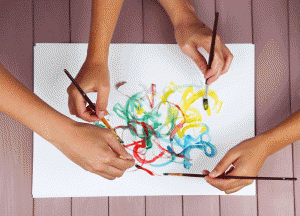Person-Centred Art Therapy Skills
This therapy brings together art imaging and the humanistic, person-centred approach of Carl Rogers a complementary process.
The therapeutic use of art is a creative mode which can by-pass our cerebral, verbal, judgemental processes, and allow us into the here-and-now world of imagination, intuition, inspiration. The paradox applies that by thinking less, it is possible to know more.
By making visible images, we can tap into material from the subconscious, denied to the forefront of our awareness, and gain valuable insights leading to growth, self-awareness and integration.

How do the sessions work?
When a client portrays an image, the therapist assumes the position of ‘not knowing’ in terms of what the image is or what meaning it holds. The therapist follows, rather than leads and is invited into the client’s experience. Through talking about their image and hearing words reflected back, clients can gain insights into its meaning for them in their lives.
Who is it for?
This approach is so supportive and respectful of the client, it can be beneficial for anyone. The method can be particularly helpful for clients who have difficulty verbalising their feelings; young children, people with autistic spectrum issues, those with depression, trauma, learning difficulties, or illness.
How I use this approach in my Craniosacral practice
In some situations, I suggest that an image may help to convey experience more easily than words. Some people respond positively and the Craniosacral work can greatly benefit from the client’s new perspective. This work has also finely tuned my person-centred focus. In listening to, and reflecting back, the exact words used, I am conscious of recognising and respecting the client’s experience.
